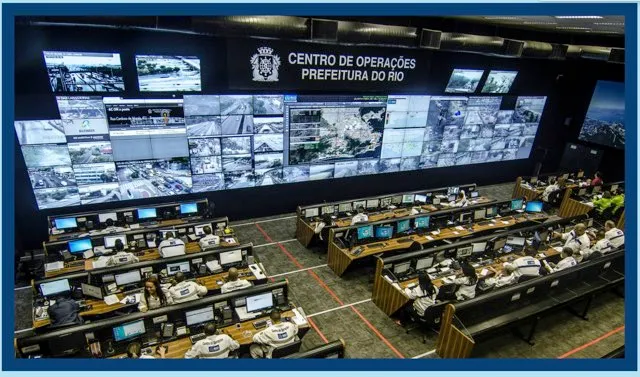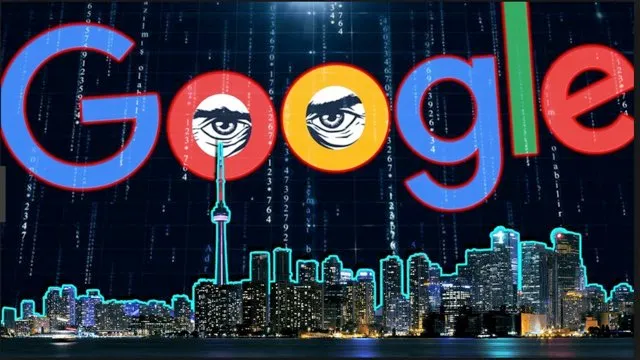In the wake of the 2008 global financial meltdown, corporations converged on cities around the world to sell technology, harvest valuable data, and deepen the private governance of urban life.
They have partnered with governments to promote what on the surface look like unalloyed benefits to city dwellers. These include safer streets, cleaner air, more efficient transportation, instant communication for all, and algorithms that take governance out of the hands of flawed human beings.
Another story lies beneath that surface. Technology-driven smart cities also deepen mass surveillance and erode personal privacy.
Read more about cities of the future:
- The changing face of our smart cities
- 3 eco-cities preparing for overpopulation, rising sea levels and air pollution
- Will the Earth ever become a city planet?
Smart cities are made possible by the integration of three technological systems forming what I call the Next Internet - the Internet of Things, cloud computing, and big data analytics.
The first refers to the sensors and processing devices inserted into everyday physical objects and living organisms, including people.
For the city it means embedding monitoring and data gathering technology into roads, pavements, buildings, streets and their lighting, as well as throughout homes, schools and workplaces. Wherever they are located, these sensors form a network of things that accumulates vast amounts of data and delivers it to distant cloud computing systems for storage and processing.
Finally, big data analytics makes it possible to use the data gathered, for example, on cars travelling down highways or city streets, and process it in a form that leads to adjustments in the timing of traffic lights or in the efficient use of High Occupancy Vehicle lanes.
It also deploys the data and images gathered from sensors in street lights so that police can better monitor locations where violent crime is a serious problem.
These three converging technological systems, literally connected through wired and wireless high-speed telecommunications, provide the infrastructure for what is anticipated to be the leap to smart cities.
Smart business
Reports on the economic prospects for smart city technologies tend to agree that this is an industry about to hit explosive growth. One study concluded that the smart city market will be worth $2.75 trillion by 2023. By 2020, forecasts estimate there will be some 600 smart cities throughout the world.
One result of investment in smart cities is a massive boost in surveillance. As one privacy expert put it, “The whole point of a smart city is that everything that can be collected will be collected.” Moreover, much of this data-gathering will take place without anything resembling user consent.
That is because smart city surveillance is ubiquitous, capturing data on people, as they walk down pavements, drive through streets, park their cars, shop, work, play, or simply sit on a park bench. The smart city threatens to reduce the pedestrian to little more than a marketable data point.
To manage the complex array of urban technology applications that make up smart cities, big technology companies have urged civic officials to build central monitoring and decision-making facilities.
IBM was the first to succeed, constructing one for Rio de Janeiro that has become a global model. Called the Rio Operations Center and resembling a military “war room”, it started up at the end of 2010.
After a massive storm led to numerous fatalities, the city’s mayor teamed with IBM to integrate the data processing and monitoring activities of some 30 municipal and state agencies, in a single structure.
The Center integrates key departments, such as police, fire, and utilities, and makes it possible to centralise data about emergency situations, weather, traffic, electricity, waste collection, recycling, disease outbreaks, gas, and water.
The facility also contains a “crisis room” where the mayor meets with advisors and makes executive decisions when faced with security threats.

The Center’s staff of some 70 analysts, all dressed in white jumpsuits, sit before banks of screens. An enormous wall monitor is divided into grids containing live video feeds from surveillance cameras, along with other data.
Google satellite and street-view maps are integrated into the system, enabling analysts to overlay additional data and obtain close-ups. The facility has the capacity to locate and identify every public vehicle, such as a city bus, at any time.
Centralisation has its merits, but the Rio Center is notable for its tall gates, tight security, and near complete lack of transparency. Data from monitoring devices, including video cameras stationed all over the city, enters the facility and feeds into a centralised decision-making process that has practically no citizen input.
The Center has stirred considerable controversy, particularly because it was used to monitor protests against the 2014 FIFA World Cup and the 2016 Olympic Games, both held in Brazil.
The former mayor of Rio de Janeiro, who has promoted the project on the TED lecture circuit, boasted in a promotional film about these surveillance capabilities: “the operations center allows us to have people looking into every corner of the city 24 hours a day, 7 days a week.”

The idea of a centralised command centre for smart city applications has spread to other locales, but they are not all as easily implemented. When in 2014 technology companies, including Google, convinced the city of Oakland, California to create a centralised facility to coordinate police and other surveillance operations in the eerily named Domain Awareness Center, mass protests led to cancellation of the project.
These concerns now swirl around Google’s efforts to redevelop a large tract of valuable waterfront property in Toronto in a project that includes widespread surveillance and data-gathering.
Privacy by design
Nevertheless, more urban areas are embracing smart city technologies than are rejecting them. Municipalities as large as San Diego, California and as small as Richmond Hill, Ontario are installing new lighting systems that are equipped to carry out 24-hour surveillance.
Governments cite the benefits, including improved management, cost savings, protection from crime, and control of the homeless population.
The technology companies that have gone into the urban development business stand to profit from the sale and maintenance of equipment and from the data they sell to advertisers and other third parties. They often provide assurances that personal identifiers will be stripped before such transactions take place, but that is not always effective, and it does not stop the company itself from retaining and using such data.
With little protection afforded in legal systems throughout the world, urbanites have to rely on the commitments of governments and companies conducting the surveillance.
However, because municipalities are under intense pressure to improve efficiency and fight crime, and because companies expect to generate revenue from data to offset their massive investment in building smart cities, public fears about surveillance and the loss of personal privacy are completely warranted.
Read more about data privacy:
- How secure are your smart home devices?
- Why do apps demand access to our photos and other data?
- Why don't we care about our data privacy?
To prevent smart cities from becoming surveillance cities, it is essential to build privacy into their design. Two principles should guide this effort.
First, it is essential to assert from the start that people have a fundamental right to personal privacy. That means any smart city data-gathering system must de-identify data at the source of collection and must take full responsibility to ensure that personal data does not go to advertisers or other interested entities.
It is equally essential to demand that data gathered from smart city projects must belong to the people from whom it is collected. Citizens have the right to retain, remove, or place in a citizen-controlled public trust, all data collected on their activities in smart cities.
They can also agree to have private and public institutions make use of their data, but only when all parties are fully informed and when there is a guarantee that if people choose not to share data at any time in the process, there will be no repercussions.
Smart cities do not have to become surveillance cities. A few municipalities, like Barcelona, have demonstrated this. But like these places, all smart cities require a strong public commitment to privacy rights.
The Smart City in a Digital World by Vincent Mosco is available now (£14.99, Emerald)
Follow Science Focus onTwitter,Facebook, Instagramand Flipboard
